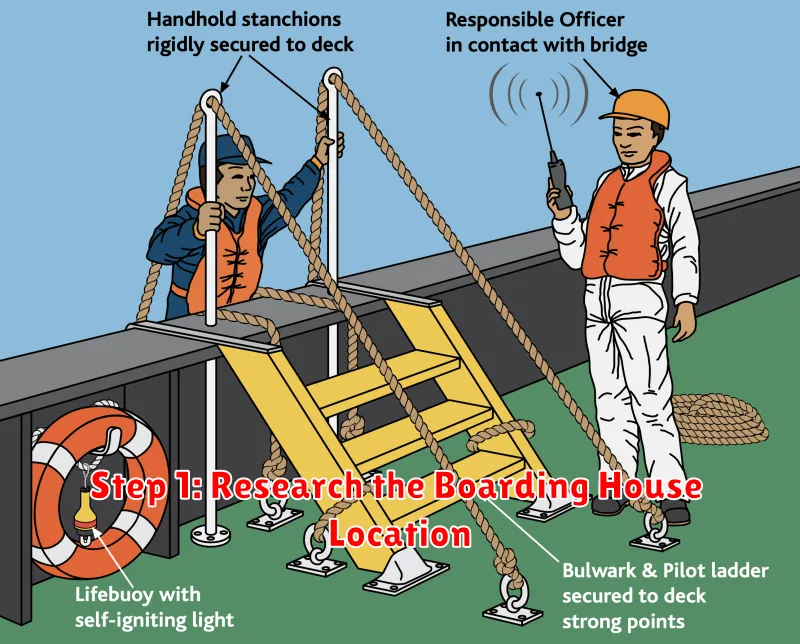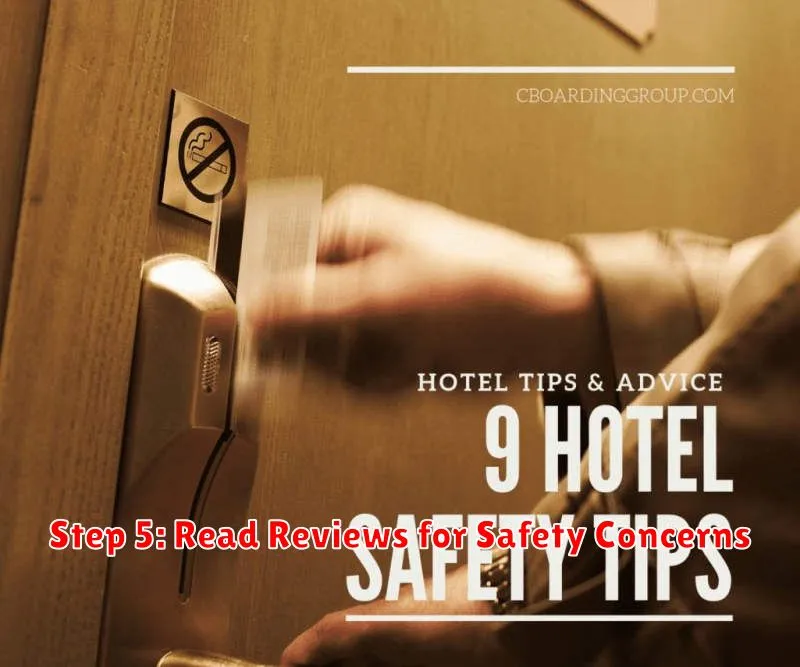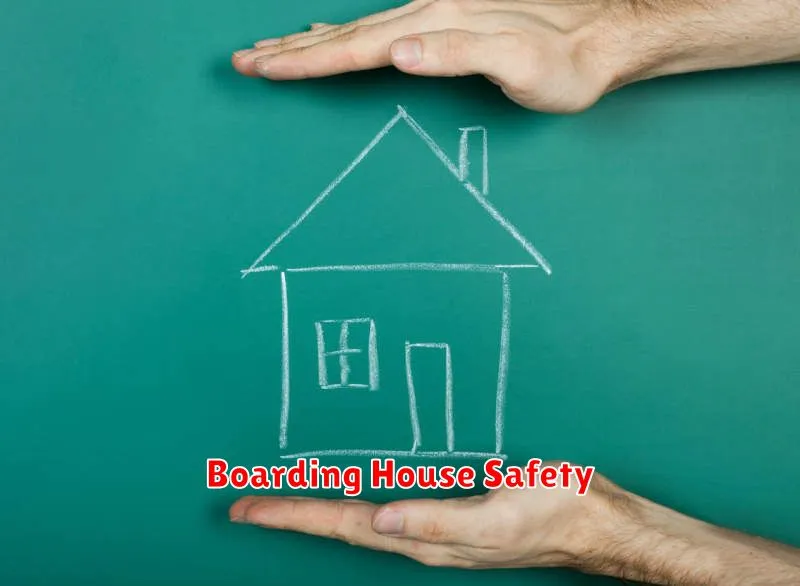Finding the perfect boarding house can be a challenge, but ensuring your safety shouldn’t be! This guide on how to evaluate the safety of boarding house rentals will walk you through crucial steps to make an informed decision. We’ll cover everything from checking the security features of the property to researching the neighborhood’s safety and understanding your rental agreement. Learn how to protect yourself and find a safe and comfortable boarding house to call home.
Introduction: Why Safety Matters in Boarding Rentals
Choosing a safe boarding house is paramount. Your safety and security should be a top priority when searching for a place to live. A secure environment contributes significantly to your overall well-being, allowing you to focus on your studies, work, or personal life without unnecessary worry.
Personal safety is the most obvious concern. A well-maintained building with adequate security measures reduces the risk of theft, vandalism, and other crimes. Furthermore, a safe environment fosters a sense of community and trust among residents, creating a more positive and supportive living experience.
Beyond personal safety, consider the impact on your health and mental well-being. Living in an unsafe environment can lead to stress, anxiety, and even depression. A secure and well-maintained boarding house contributes to a healthier and happier living experience.
Ultimately, investing time in evaluating the safety of a potential boarding house is an investment in your peace of mind and overall well-being. It’s a crucial step in finding a comfortable and supportive place to call home.
Step 1: Research the Boarding House Location

Choosing a safe boarding house begins with researching its location. Location is paramount to safety. Use online maps to familiarize yourself with the surrounding area. Look for nearby amenities like well-lit streets, police stations, hospitals, and reliable public transportation.
Consider the crime rates in the neighborhood. Many websites and police departments publish crime statistics; use these resources to assess the area’s safety. Pay attention to reports of burglaries, assaults, and other violent crimes. A seemingly quiet street might be close to a high-crime zone, so thorough research is crucial.
Look for signs of a well-maintained and active community. Areas with visible community involvement often have lower crime rates. This can include community gardens, active neighborhood watch programs, or frequent local events. A well-maintained area often suggests a greater sense of responsibility and vigilance among residents.
Finally, consider your personal comfort. Even if statistics show a low crime rate, if the area doesn’t feel safe to you, it’s best to look elsewhere. Trust your instincts; a safe and comfortable living environment is essential.
Step 2: Check Security Features Like Locks and Cameras
Before signing a lease, thoroughly inspect the security features of your potential boarding house. Solid locks on all exterior doors and windows are crucial. Make sure they are in good working order and that the doors are sturdy. Test the locks yourself.
Look for evidence of security cameras, both externally facing the street and internally in common areas. Inquire about the functionality of the cameras and whether footage is recorded and stored. While not a guarantee of safety, cameras are a proven deterrent to crime.
Consider the lighting around the property. Adequate exterior lighting significantly reduces the risk of criminal activity. Poor lighting creates shadows and hiding places that criminals can exploit.
Don’t hesitate to ask the landlord or property manager about any security measures in place beyond visible features. This may include alarm systems, security patrols, or tenant communication systems for reporting incidents.
A thorough security check provides peace of mind and helps you make an informed decision about the safety of your potential new home. Your safety is paramount.
Step 3: Ask About House Rules and Tenant Screening
Before committing to a boarding house, thoroughly inquire about their house rules and tenant screening process. House rules provide insight into the level of order and respect maintained within the property. Look for rules addressing noise levels, guest policies, and maintenance responsibilities. Stricter, well-defined rules often indicate a more responsible and secure environment.
The tenant screening process is crucial. A robust process helps ensure responsible tenants are selected, contributing to a safer living space for everyone. Ask specific questions about their background checks, credit checks, and reference verification procedures. A landlord unwilling to disclose details about their screening process should raise a red flag.
Understanding both the house rules and tenant screening provides a clear picture of the landlord’s commitment to maintaining a safe and orderly living environment. Don’t hesitate to ask clarifying questions; a transparent and responsive landlord is a positive sign.
Step 4: Inspect Fire Safety Measures
Fire safety is paramount when evaluating a boarding house. Thoroughly inspect the property for fire safety measures to ensure your well-being.
Look for working smoke detectors on every floor, ideally interconnected. Check their condition; they shouldn’t be dusty or damaged. Ask the landlord about their testing frequency – regular testing is crucial.
Identify fire extinguishers. Check that they are appropriately rated for the types of fire risks present (e.g., Class A for ordinary combustibles, Class B for flammable liquids, Class C for electrical fires). Verify that they are visibly accessible and not expired. Inquire about the landlord’s maintenance schedule for these.
Examine escape routes. Are there clearly marked and easily accessible exits? Are the hallways and stairwells uncluttered? Count the number of exits; more is always better. Note the presence and condition of emergency lighting.
Inquire about the landlord’s fire safety plan. A responsible landlord will have a documented plan, including procedures for evacuation and emergency contact information. Don’t hesitate to ask for a copy.
Don’t underestimate the importance of fire safety. A lack of proper measures can be a major risk factor. Ensure these aspects meet your standards before committing to a rental.
Step 5: Read Reviews for Safety Concerns

Once you’ve shortlisted potential boarding houses, delve into online reviews. Sites like Google Reviews, Yelp, and Facebook can offer valuable insights into the safety of the property and surrounding area. Pay close attention to comments regarding security measures, such as the presence of security cameras, adequate lighting, and secure entry systems.
Look for mentions of noise levels, as excessive noise can be a safety concern, potentially masking emergencies or creating an unsettling environment. Read reviews carefully for any mention of incidents, such as break-ins, theft, or harassment. While individual experiences might not always represent the overall safety of the place, a recurring pattern of negative safety-related reviews should raise serious concerns.
Consider the reputation of the management. Do they respond to negative reviews? How do they address safety concerns raised by tenants? A responsive and proactive management team is more likely to prioritize tenant safety. Remember, reviews are subjective, but a consistent pattern of safety concerns across multiple platforms should be a significant factor in your decision-making process.
Tips for Finding Verified Boarding Houses
Finding a safe and reliable boarding house is crucial. Verification is key to ensuring your safety and peace of mind. Here are some tips to help you find verified boarding houses:
Check online directories and review sites: Websites specializing in rental listings often allow for user reviews and ratings. Look for houses with consistently positive feedback and a significant number of reviews. Pay close attention to comments regarding safety and the landlord’s responsiveness.
Verify the landlord’s legitimacy: Don’t hesitate to ask for identification and business registration details. You can cross-reference this information with relevant government databases to confirm their legitimacy. A legitimate landlord will be transparent and willing to provide documentation.
Inspect the property thoroughly: Before signing any lease, visit the boarding house in person. Assess the overall condition, security features (locks, lighting, security cameras), and the neighborhood’s safety. Look for any red flags that might indicate maintenance issues or safety concerns.
Request references: Ask the landlord for references from current or previous tenants. Speaking with existing tenants can provide invaluable firsthand insights into the landlord’s management style and the overall living environment.
Use a reputable real estate agent: A trustworthy real estate agent can screen potential landlords and properties, saving you time and potential headaches. Choose an agent with a proven track record and positive reviews.
By following these tips, you can significantly increase your chances of finding a safe and verified boarding house, reducing your risks and enhancing your overall experience.
Conclusion: Ensuring a Safe Living Experience
Finding a safe and comfortable boarding house requires diligent research and careful consideration of several key factors. By thoroughly investigating the property’s security measures, neighborhood safety, and the landlord’s responsiveness, you can significantly reduce potential risks.
Remember to trust your instincts. If something feels off, don’t hesitate to explore other options. A safe living environment is paramount to your well-being and peace of mind. Prioritizing safety during your search will contribute to a more positive and secure living experience.
Ultimately, the process of evaluating a boarding house’s safety is an investment in your personal well-being. Taking the time to assess these crucial aspects ensures a more secure and enjoyable stay.

